Mowing the lawn is a chore that most people do not enjoy. The idea of a robotic lawnmower appeals to many for ease and convenience. One aspect that puts people off is that most of them need a perimeter wire to guide them. The good news is that you can get a robotic lawn mower that does not need a perimeter wire. We explore some of the options and consider the value in them.
Are there robot lawn mowers without perimeter wires? Even though most robotic lawn mowers use a perimeter wire, some do not require one. The best-known brands that do without a boundary wire are Ambrogio and Wiper. However, there are many other models from other less well-known manufacturers.
Before you rush out to get one, there is a bit you need to know. There are advantages and disadvantages that need to be explored before making your decision.
Let’s take a look at a few of the important factors to consider and then we will tell you about some of the options available for robotic lawn mowers that do not need a boundary wire.
Contents
Why do most robotic lawnmowers use a boundary wire?
Before exploring the alternatives, it is important to understand why the vast majority of robotic lawnmowers make use of a boundary wire. The truth is that it is a simple and effective way to ensure the lawnmower knows where to work to ensure efficiency and safety.
Theoretically, if you had a small yard that was fully fenced or walled than a traditional robot lawn mower could navigate using only impact sensors. However, such a yard is rare and the current impact sensors on their own would probably not allow for a neat or efficient cut.
A robotic lawnmower without a boundary wire would require more sophisticated technology. The main issue with this is that it pushes up the price of the product. A boundary wire is cost-effective and works well.
The good news is that, according to the general principle of Moore’s Law, the price of the new technology will come down over time. As the technology matures and more people adopt it, the technology will not only improve but will also become more affordable.
We have already seen this with robotic lawn mowers that use a boundary wire. They are now much better at mowing your lawn and less expensive than they were even a few years ago. The same will happen with models that don’t require a boundary wire.
Why would you want a robotic lawnmower without boundary wires?
The main purpose of a robotic lawnmower is convenience. Sure, you want a neat tidy lawn but you want to achieve this with minimal effort. A robotic lawnmower will once set up, keep your lawn looking great all year round with very little work from your side. The main drawback is the initial set up process.
The boundary wire will have to be run and secured around the lawn area that you wish to mow. Such a job will take some time and effort. This will leave the wire exposed which is a potential risk. The wire can be buried but this will take a bit more effort and leave the lawn looking unpleasant until the grass grows back.
Boundary wires can also become damaged over time meaning they will need to be repaired or replaced now and then. What technologies do robotic lawn mowers without perimeter wires use?
If they can make a driverless car then surely it would not be that difficult to create a robotic lawn mower that does not rely on a boundary wire. The truth is they can, but unfortunately the technology is still quite expensive and makes the cost of the product unaffordable for most people.
Here are a few ways an automated lawn mower can operate without a boundary wire:
Sensor technology
This is currently the leading technology used on robotic lawn mowers that operate without a perimeter wire. Beneath the lawn mower is a humidity sensor that enables the machine to tell the difference between grass and other surfaces. This will allow it to cut the lawn and operate only where it is needed.
The Ambrogio L60 from Zucchetti Centro Sistemi SpA is an example. The technology is fairly basic yet surprisingly effective. It also has the advantage of not being extremely expensive.
The drawback of this technology is that it is far from perfect. The sensors often have difficulty in discerning between lawn and other areas that have the same or similar humidity. A pond or flowerbed, for example, could confuse them.
It is likely that we will see this technology used in conjunction with other technologies to ensure greater accuracy.
GPS Technology
This has become a fairly common technology and as we have noted, the price has come down substantially over the years. Several existing robotic lawnmowers already incorporate GPS technology despite still using boundary wires. It makes them more efficient and accurate although it does naturally increase the cost.
GPS is also used on a number of models such as many of the WORX Landroid range as a security measure. It will allow you to track down your product if it is stolen. Due to the cost it does not come included with the lawn mower but can be purchased separately.
The current accuracy of this technology is not sufficient to perfectly guide an automated lawn mower. Unless an expensive GPS is installed, which would be very costly, the accuracy will only be accurate up to a few meters. This is not sufficient for accurate and safe operation.
Fortunately, the technology is progressing and improving at a rapid rate and the concept of an affordable and accurate GPS robotic lawn mower will soon be feasible. It might need other technologies to complement it but could soon mean that boundary wires are no longer essential.
Other than that, there is also the Differential GPS which some very expensive robotic lawn mowers use. DGPS uses an extra ground station to set up its own coordinate system, thus making it extremely accurate with an accuracy around one inch. This is enough for robots to only use DGPS without the need of a perimeter wire to navigate. Unfortunately these robotic lawn mowers usually cost a hell lot of money ($10,000 or more).
Beacon technology
This is a technology that has been used in robotic vacuum cleaners, the popular iRobot range in specific. The company has patented the technology and are looking at easy to adapt it to a lawn mower device. The mower they came up with is called iRobot Terra and was supposed to come into market this year in the Germany and as a beta program in the US. However, there have been delays partly related to the Coronavirus.
The system of location beacons has proved successful and effective and this technology looks promising. The only downside is, that you cannot install the robot yourself. It has to be installed by a licensed professional and you cannot move the beacons, once installed.
Vision-based technology
This is the primary technology used by self-driving cars and works extremely well. While still relatively expensive the growth in systems is leading to improvements and lowers costs. This is likely to be one of the leading options used in robot lawn mowers that do not need boundary wires.
They are able to identify what areas are grass and even determine if the grass needs to be cut. This will not only make them safe and accurate but also allow them to be highly efficient. One robot that has been designed this way is called Toadi. It started on kickstarter some time ago and they developed quite an interesting product. I think this is the most promising approach of all. More about that further down.
There are a number of other technologies in development and this bodes well for the future of robot lawn mowers that can work well without the need for a boundary wire.
Disadvantages of robot lawn mowers without perimeter wires
As the technology is still evolving there are a few disadvantages and it is important to consider these before making your investment.
Most will need to be manually recharged. Unlike models with a boundary and guidewire, they do not automatically return to the charging dock. This need not be a major irritation but is something to think about.
You will still need, in most cases, a fence or some form of boundary. This could be pebbles, paving, or other ideas but the lawn mower will need something at the edge of the lawn to operate effectively. You do not want to run the risk of the device mowing a prized flowerbed.
If you have a lot of different surfaces, ponds, or holes in the lawn, you might experience problems.
Most also require a manual start. This means that they cannot be scheduled to automatically mow the lawn like the majority of robot lawn mowers with a boundary wire.
Existing options for robot lawn mowers without perimeter wires
Some technologies have already been available for quite a while. The might suit your needs but also come with drawbacks. However, in the next section I will also present you some really promising new technologies to handle the problem.
Ambrogio L60 Robot Lawn Mower
Arguably one of the first robot lawn mowers that does not require a perimeter wire, this model requires no effort to set up and install. The sensors will guide and direct the device to keep your lawn neat and tidy with very little effort from your side.
It has a 9.5 inch blade and can handle gradients up to 50-percent. It also has 4-wheel drive and good safety features. Like most robot lawn mowers in this class, one has to charge it manually.
It is a compact rugged robot lawn mower that is ideal for lawns up to 4300 square feet. Ambrogio has more than 20 years in robotics and their products perform well.
Main advantages and disadvantages of the Ambrogio L60 mowing robot
Advantages
- No installation necessary. You can simply charge and start it
- One charge lasts for 2 hours
- Handles up to 50 % incline due to its all-wheel drive
- Can be used quickly on any number of lawns/surfaces
Disadvantages
- Only able to handle yards up to 4300 square feet
- Must be started manually
- Does not recharge itself
- No 100% certainty that it will not leave the lawn
- Bumping with impact sensor produces annoying noise
The technology of this mowing robot has been around for a while now and I would wish for something better by now. Unfortunately, the grass sensor does not work with one hundred percent safety and the impact sensor produces an annoying noise in the long run.
But if you can overlook these drawbacks, it’s a great product for those who do not want to install a boundary wire.
Robot mower Wiper Blitz Zucchetti
This is another option that can operate without the need for a perimeter wire. This model is perfect for a lawn area of 4,300 to 6,400 square feet. There are other models available if you have a larger area to cover.
Before using it you want to ensure you have some sort of edging to your lawn. This could be in the form of paving, gravel, fences, or other materials. The robot uses 6 sensors to determine the surface and ensure it only cuts where there is grass.
It is light and compact and can handle a slope up to 30 °. As with most current robot lawn mowers that do not use boundary wires, you will have to take it to the charging station manually.
Main advantages and disadvantages of the Wiper Blitz Zucchetti
Advantages
- No installation necessary. You can simply charge and start it
- One charge lasts for 3.5 hours
- Handles up to 50 % incline due to its all-wheel drive
- Can be used quickly on any number of lawns/surfaces
- Only weighs 18 lbs
Disadvantages
- Only able to handle yards up to 4,300 to 6,400 square feet
- Must be started manually
- Does not recharge itself
- No 100% certainty that it will not leave the lawn
- Bumping with impact sensor produces annoying noise
Again, the technology has its drawbacks, but depending on your situation it could be your best choice. If you have a fence or something similar around your hard, so that it cannot accidentally run away, that’s a big plus. Do not use this robot if you have a ground level pool though.
LawnBott LB1200 Spyder
This is one of the first robot lawn mowers that can operate without a boundary wire. It uses the sensor system we described above to navigate. The sensors can determine the difference between grass and other areas or surfaces.
It is suitable for a lawn area up to 5,500 square feet. The Li-ion battery will allow it to operate for roughly 5 hours, depending on the conditions. Like most robot lawn mowers that do not use a boundary wire, it will need to be charged manually.
The design is compact and durable. The LB1200 has 4-wheel drive and can deal with an incline as much as 27 degrees. You will need a fence or some sort of boarder at the edge of your lawn area.
Main advantages and disadvantages of the LawnBott LB1200 Spyder
Advantages
- No installation necessary. You can simply charge and start it
- One charge lasts for 5 hours
- Handles up to 50 % incline due to its all-wheel drive
- Can be used quickly on any number of lawns/surfaces
- Only weighs 19.2 lbs
Disadvantages
- Only able to handle yards up to 5,500 square feet
- Must be started manually
- Does not recharge itself
- No 100% certainty that it will not leave the lawn
- Bumping with impact sensor produces annoying noise
Ambrogio L400i (B)
If you have a large area of lawn and a pretty decent budget, the Ambrogio L400i (B) is an option to consider. It too can function without perimeter wires and can cover an area as large as 2.5 acres. That is some serious mowing power but it obviously comes at a price.
It makes use of GPS navigation and will connect to your mobile device for user-friendly control. The generous 33 inch cutting width, powerful brushless motor, and impressive 60 Ah Lithium-ion batteries give it the ability to tackle such large areas.
This model is clearly not ideal for the average yard but if you have a large area it is worth considering. Although you have the convenience of not having to lay perimeter wires, the complexity of the device means that an authorized installer is needed to come out and set the L400 up initially.
Main advantages and disadvantages of the Ambrogio L400i (B)
Advantages
- Does not need a boundary wire
- One charge lasts for 6 hours
- Recharges itself automatically
- Can handle huge areas up to 2.5 acres
- Up to 8 different mow areas
- Works extremely fast (which it has to, in order to handle 2.5 acres)
- Handles up to 45 % incline
Disadvantages
- Extremely pricy (~ $15,000)
- Only for very big yards
- Very heavy due to its size
This is just to complete the list. For most people this mowing robot will not be the right one, because it is too big and too expensive. But the mowing robot is really powerful and can mow huge areas in a very short time.
Anyway, if you are interested in the product, it is available on Amazon.
SmartMow
Here is another company that has made advances in robot lawnmowers. While their primary goal is to ensure the highest safety standards, they have also developed lawn mowers that will operate without the need for a boundary wire.
The SmartMow LTS-100: GPS Robotic Lawn Mower is designed for an area up to 1 acre. SmartMow has patented its “virtual boundary” technology which allows it to tackle lawns without perimeter wires or beacons. The technology used for proximity detection also makes the lawn mowers extremely safe especially for children. It will detect the presence of a child or pet and stop the blades almost instantly.
They have a range of other models for larger areas and apart from being safe, easy to set up, and operate, they are also powerful and durable. They can handle rough terrain and should last you many years.
Forthcoming attractions
Now lets get to the exciting stuff. These are the mowing robots of the future with the most promising technologies. Unfortunately they cannot be acquired the regular way yet. You can either apply for testing the product (iRobot Terra) if you live in Germany or pre-order them (Toadi).
Toadi and Toadi Pro
Although not commercially available as yet, one can pre-order the Toadi and Toadi Pro. They look like they will come with a hefty price tag but you can get a discount if you get involved with their Kickstarter program.
They can handle lawns of up to 0.6 acres and 1.2 acres respectively. The robots use cameras and advanced artificial intelligence (AI) to navigate the yard for a highly efficient cut. Unlike most conventional robot lawn mowers, they cut in straight lines for a faster cut and less wasted effort.
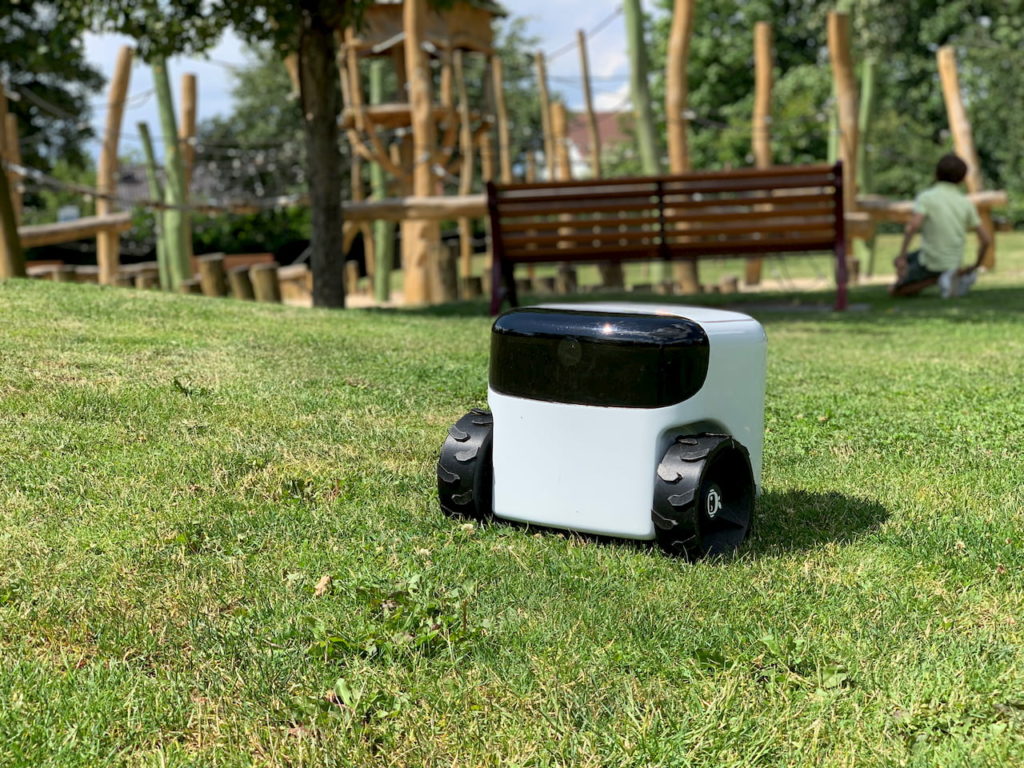
The mowers are easy to control from your smartphone and have some great safety and security features. A really nice feature is the 4K camera that can be remotely accessed with your smartphone. The robot does not only mow your lawn, but can also act as a guard, using night vision to spot any intruders.
The technology used on these robot lawn mowers shows the potential for quality devices that do not need a boundary wire.
The product is not in regular sale yet, but can be pre-ordered here.
iRobot Terra
The iRobot Terra mowing robot uses the beacon technology to navigate in the garden. The beacons are set up around the mowing area, which span a radio network over the lawn, through which the mowing robot can exchange information and determine its position.
This eliminates the need to lay a boundary wire. With this mowing robot, the manufacturer iRobot draws on many years of experience in the vacuum cleaner robot segment.
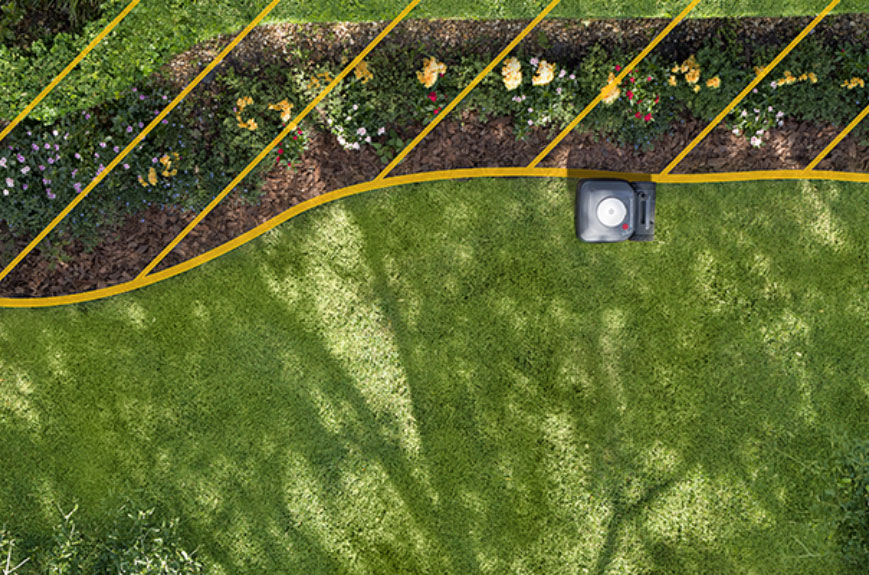
The special feature of the mower is not only that it does not need a boundary wire: It also mows the area systematically instead of mowing it in a chaotic manner as many other mowers do.
Final thoughts
While the technology still has a way to go, the future for robot lawn mowers that do not need a boundary wire looks promising. A lot of research and development is taking place in the technologies that will help to guide them correctly and accurately. This will eliminate the hassle of laying out boundary wires.
The jury is still out as to whether any of the current models are worth investing in just yet. While there is some positive feedback, it would appear, for now at least, most people would be better off with the options that use a perimeter and guide wire.
While the installations will take a bit of time it only has to be done once. Thereafter the robot will work according to a schedule and automatically recharge itself as necessary.
If you really dread the idea of perimeter wires and have the appropriate size and shape of lawn then you could consider one of the available options. In the very near future there are sure to be better options that will do the job effectively with fewer of the drawbacks of the current models.
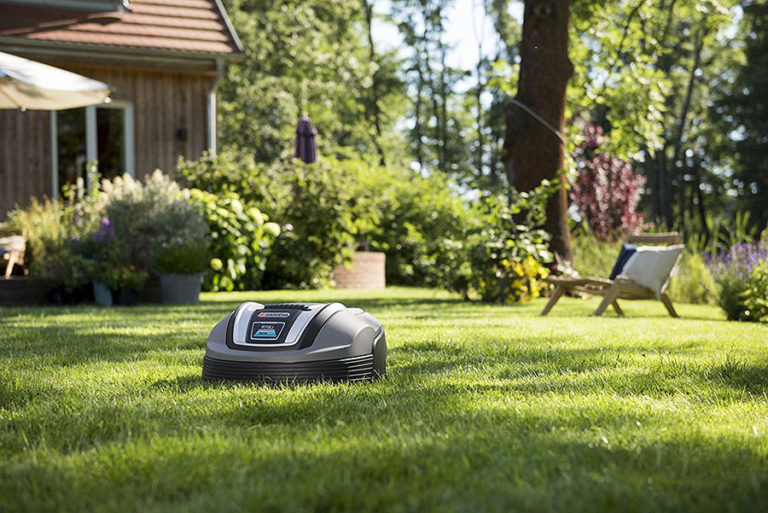

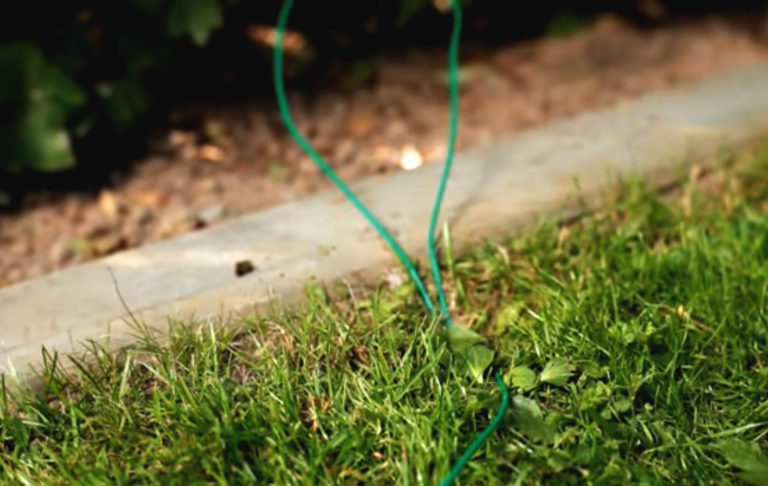
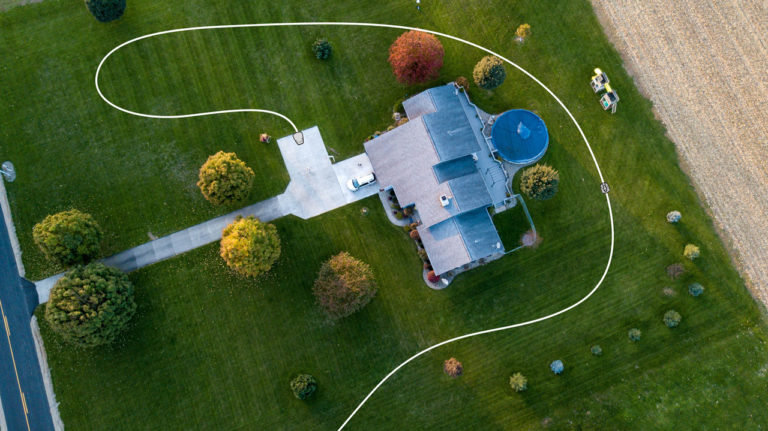
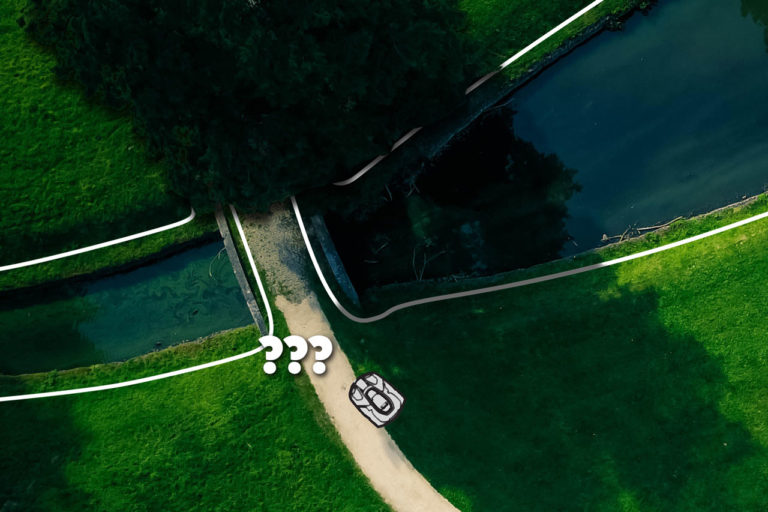
All very interesting and helpful thank you Matthias. However you have not mentioned one main drawback to having a boundary wire which is why I am investigating that. I had a Mowbot for many years a long time ago and the wire had disappeared into the ground by about 2 or 3 inches so when it broke it was very difficult to find out where the break was. We were able to find out the area but had to dig up a long stretch before locating the exact spot. As the breaks occurred fairly frequently it put me off getting another until the technology of wireless mowers was perfected. I am still waiting! The old Mowbot did many years before it did need replacing however.
I would like to go back to having another robotic mower once the problems have been ironed out- automatic recharging and no wire. Would it be too cheeky of me to ask you to let me know when that happens please?!
Take a look at the Open Mower project – https://github.com/ClemensElflein/OpenMower